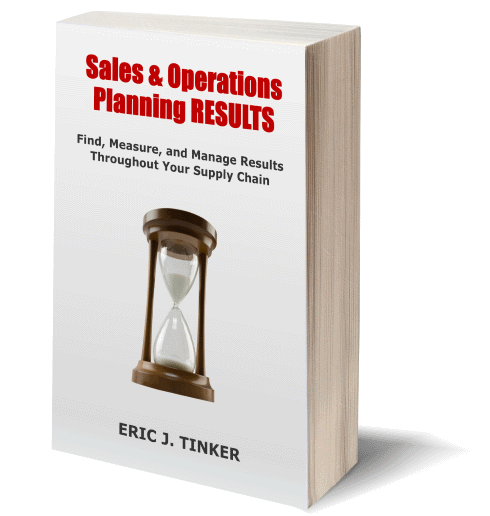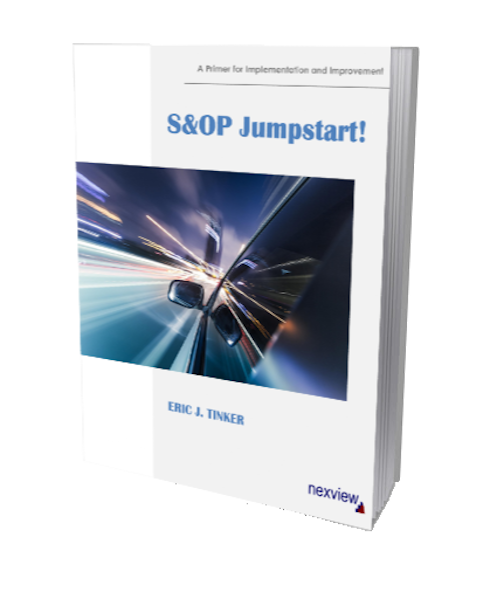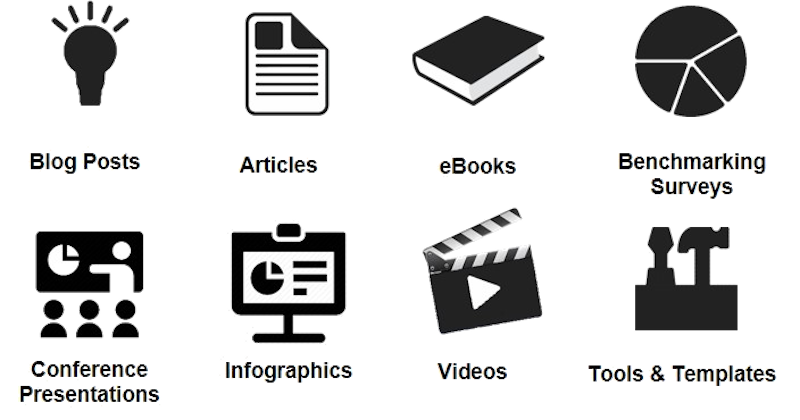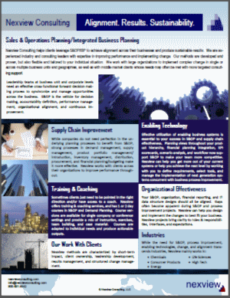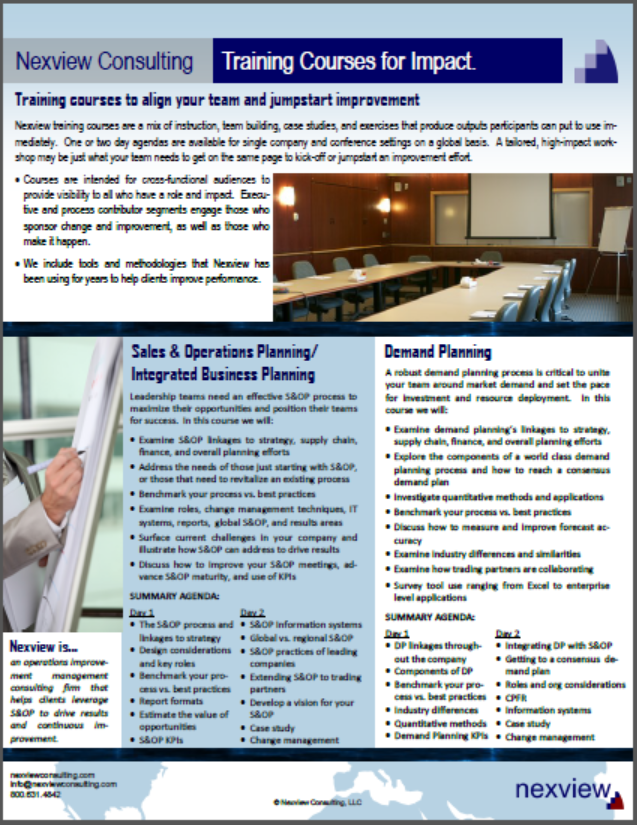
Are S&OP Best Practices Best for You?
“Best Practices” are the collectively agreed practices that have been shown to produce desired outcomes for a process, subject matter area, or industry. Companies, industry organizations, and consultants all have their lists (we do too, see the Nexview S&OP Performance ArrowSM). While it’s great to research this information and leverage the experience of others, best practices should absolutely be used as a starting point and not taken as gospel. Best Practices need to be interpreted and applied to each individual situation. This could mean applicability to your business or industry, as well as capacity to implement, and effort to implement vs. the impact implementation would have.
For example, conventional S&OP best practices provide guidance for planning horizons (say 3 – 24 months) as well as discussion at the product family level. While this may be appropriate for many situations, we were working with a large chemical company that produced intermediate chemicals (i.e. chemicals that go into other chemicals) and raw materials for the plastics industry. While they did have major classifications for financial reporting and organization structure (i.e. business units) they had many grades of product within each business unit. Too many to discuss in S&OP, but to group in “product families” for S&OP’s sake, did not make sense for them and would not add planning discussion and decision making value. For our S&OP design, we ended up taking the grades that made up 80% of the revenue (which narrowed the field to a realistic amount) and grouping the rest as “other”. Some might say that this was moving to an SKU level discussion (heresy in S&OP circles), but it was right for this business.
In another situation, the client had a very short supply chain (inputs with very short lead times (days or less) and a quick manufacturing process (1 day). Thus – we only had an S&OP horizon of 3 months. Again, not consistent with “Best Practices”, but fit for purpose. Now, this didn’t provide for full integration with financial planning, but it was a first step and what the business was ready to take on at this point in time.
Thus, best practices must be best for the particular application. Additionally, the implementation of best practices should be phased along a planned, resourced, and communicated maturity journey.





